
You don’t need a passport or a reservation to get into Korean cuisine. With a few core ingredients and a little spirit, you can create vibrant flavors that capture the heart of Korea’s food scene right from your kitchen.
Kimchi Jjigae

A bubbling pot of kimchi jjigae is the ultimate antidote to a long day. This fiery stew combines aged kimchi, tofu, pork, and a rich broth into one unforgettable dish. The magic lies in the fermented tang of the kimchi, which deepens into pure umami with every simmering minute.
Bibimbap

Bibimbap starts with rice, but it doesn’t stop there. Colorful vegetables, a fried egg, and spicy gochujang bring it to life. Each topping is arranged with care, and once mixed, the flavors mix into a balanced dish that looks as good as it tastes.
Tteokbokki
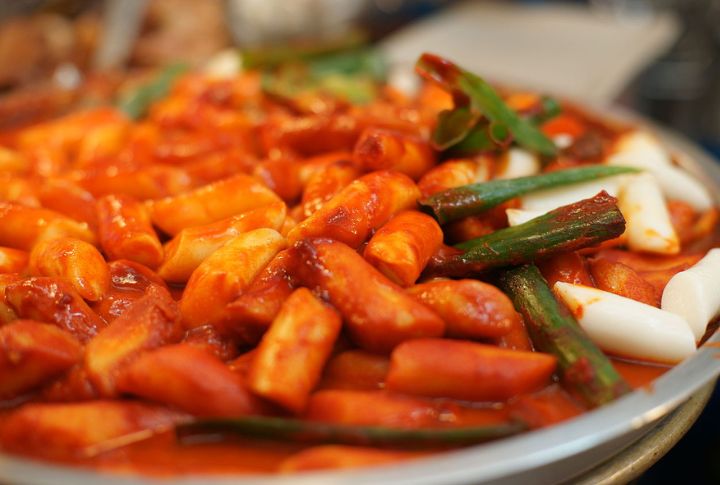
Sticky, chewy rice cakes swimming in a sweet and spicy sauce, that’s tteokbokki in a nutshell. It’s a Korean street food favorite but ridiculously easy to whip up at home. You only need a few ingredients and minutes to stir everything into glossy, fiery goodness.
Japchae

Japchae comes to life when beef, spinach, carrots, and mushrooms twirl through slippery, glassy sweet potato noodles. Stir-fried with sesame oil and soy sauce, every bite reveals a harmony of textures and flavors. This dish offers a satisfying chew that is light on the palate.
Samgyetang
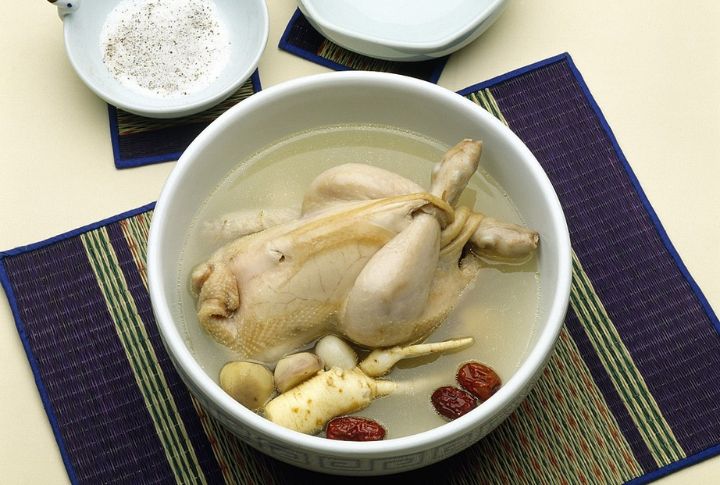
Especially popular during Korea’s summer months, Samgyetang is a traditional soup made by simmering a whole young chicken filled with sticky rice and jujubes. The broth is seasoned with ginseng and medicinal herbs, which results in a super aromatic preparation.
Haemul Pajeon
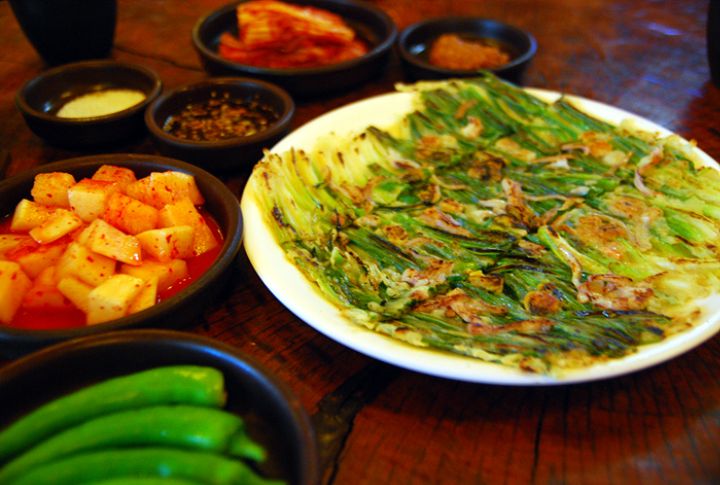
Haemul pajeon is a Korean pancake made from a batter of flour and eggs. It’s cooked until golden and crispy, then served with a soy sauce-based dipping sauce. Scallions and seafood like shrimp and clams add texture and flavor to this savory dish.
Sundubu Jjigae
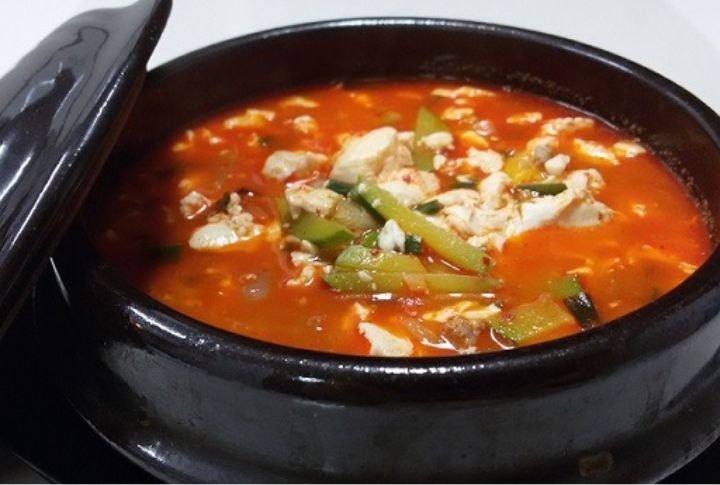
Soft tofu is the star of sundubu jjigae, a Korean stew simmered in a spicy broth made with gochugaru (Korean red chili flakes) and anchovy or kelp stock. A raw egg is often cracked into the hot stew just before serving, along with clams, shrimp, pork, veggies, etc.
Gimbap
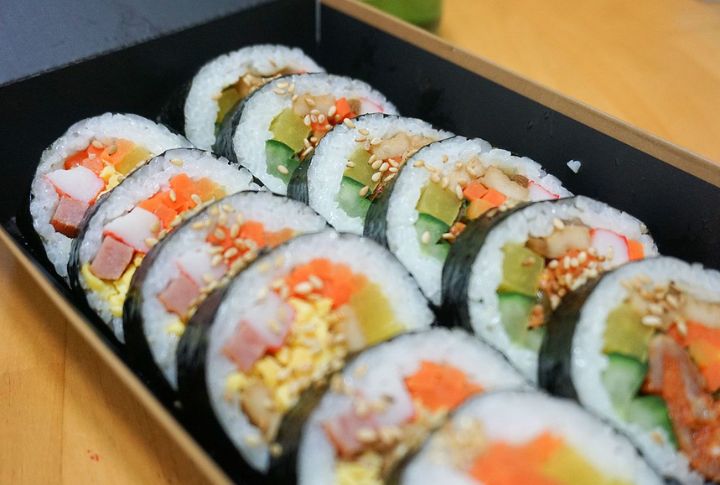
Gimbap is a Korean dish with seasoned rice and various fillings such as pickled radish, spinach, egg, and bulgogi, rolled in seaweed sheets and sliced into bite-sized pieces. It is a popular choice as a packed meal and maybe even a quick snack.
Mandu
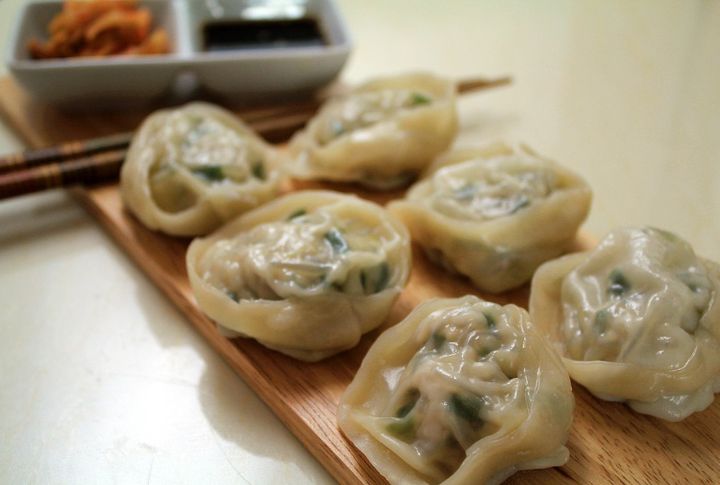
Typically enjoyed with a soy dipping sauce, mandu are Korean dumplings filled with ground meat, tofu, garlic, and vegetables. They are often made in large batches and frozen for later use. Mandu can be boiled, steamed, pan-fried, or deep-fried, depending on the desired texture.
Galbi
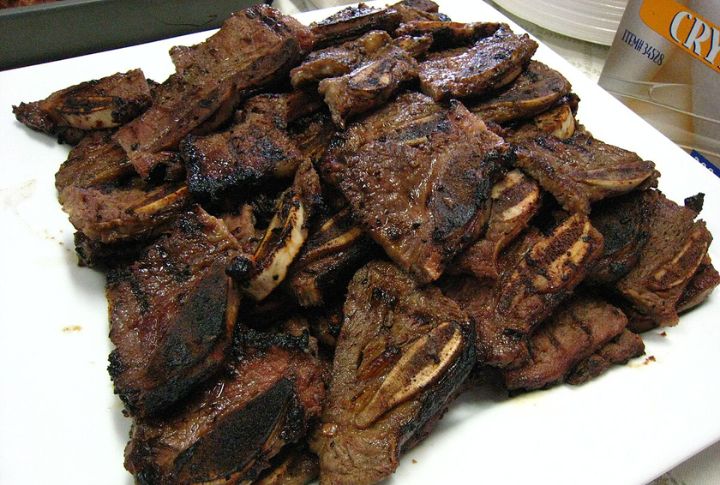
Galbi consists of beef short ribs marinated in soy sauce, sugar, garlic, and sesame oil. The ribs are usually grilled over an open flame to create a charred exterior with a tender interior. Bone-in cuts are most common because they allow the meat to retain extra juiciness.
Jajangmyeon

Thick wheat noodles are generously tossed with a rich, savory black bean sauce to create jajangmyeon, a beloved Korean-Chinese noodle dish. The sauce is made from fermented black soybeans, diced pork, potatoes, and vegetables like zucchini and onion for a hearty meal.
Budae Jjigae

Budae jjigae, or “army base stew,” originated after the Korean War using surplus ingredients like sausages and baked beans. It forms a spicy, hearty stew with ramen noodles and gochujang. The dish is still popular today for its bold flavors and flexible ingredients.
Gyeranjjim

Often served hot in a small clay or stone bowl, gyeranjjim is a Korean side dish made by steaming beaten eggs. The eggs are seasoned with anchovy stock and sometimes green onions. The steaming process produces a savory, delicate texture like a light custard.
Yangnyeom Chicken

Yangnyeom chicken features crispy fried chicken pieces coated in a vibrant sauce made from gochujang, garlic, sugar, and vinegar. The balance between spicy and tangy flavors defines this Korean favorite. Commonly served with pickled radish, it is a staple in many casual Korean eateries.
Kongnamul Muchim

Soybean sprouts are the star of kongnamul much, which is blanched quickly to retain its crunch. These sprouts are seasoned with sesame oil and salt and lightly tossed to maintain freshness. As a popular banchan (side dish), kongnamul pairs well with nearly any Korean meal.
Bossam

Sliced pork belly boiled with aromatics like ginger and doenjang anchors the dish called bossam. Eaten wrapped in napa cabbage or lettuce with spicy radish salad and ssamjang, it creates a customizable bite. Bossam is often featured during kimjang (the traditional process of prepping kimchi).
Miyeokguk

Miyeokguk is made by simmering rehydrated seaweed with beef or seafood in a light broth seasoned with soy sauce or salt. Rich in nutrients like iodine and calcium, it is commonly eaten on birthdays and by postpartum mothers. The soup’s mild taste complements a range of meals.
Hotteok

Dough balls filled with brown sugar and crushed nuts are pan-fried into golden disks to create hotteok. This Korean winter snack turns molten inside as it cooks, with the filling oozing out once bitten. At home, the hotteok is best enjoyed piping hot straight from the pan.
Muguk

Muguk is a light Korean soup made by simmering sliced Korean radish with thin beef strips in a soy sauce-seasoned broth. Often cooked with garlic and sesame oil, it produces a clear, savory soup served alongside rice. Muguk is commonly prepared for everyday meals in Korean homes.
Dakgalbi

Cooked with sweet potatoes, cabbage, carrots, and rice cakes in a large, heated pan, dakgalbi is a Korean stir-fried dish made from bite-sized chicken pieces marinated in a spicy sauce. It is commonly enjoyed communally at the table to unite people over its bold, hearty flavors.
Leave a comment